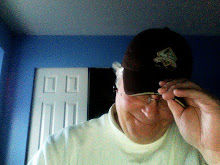I learned something new the other day. I have always prided myself on being a good "Golfing Citizen" in that I always fix my ball mark on the green. Moreover, I usually try to fix several others as well.
Out of curiosity, I surfed the web to see if I could find actual instructions about how fixing a ball mark should be done. I did this, mind you, more to reinforce my efforts than to really find out anything new. Shame on me! What I discovered, however, really surprised me. I had been doing it wrong all along. In fact, I had been doing it in a way that actually did the green more damage than good!
Want to know what the correct method is? I thought you did.
 IT ALL STARTS WITH A FAMILIAR TOOL
IT ALL STARTS WITH A FAMILIAR TOOLYou are all familiar with this tool, right? No, it's not a divot tool or divot fixer, despite being called that everywhere. Divots, remember, are those shaggy little turf throw rugs that result — we all hope — from catching the turf during iron shots after you make contact with your golf ball. Divots are replaced. Ball marks are repaired. Hence, we use a ball mark repair tool like the one pictured at left.
Ball mark repair tools come in all shapes and sizes and, if you want, you can pay a king's ransom for one. Having bought a variety of these tools, I find that all you really need are the simple, inexpensive ones sold at most pro shops for a couple of bucks.
 LET'S GET STARTED
LET'S GET STARTEDRemember that a ball mark is the result of a ball hitting the green, usually from rather high in the air. The result is the ball coming down and opening up a mark that pushes the turf out in all directions. This is important to remember so that the repair process is clean and effective.
The mistake that I was making was thinking that I needed to lever the center of the ball mark up. Accordingly, I would insert my repair tool at an angle and then press down, lifting up the center of the ball mark. Turns out this is a big NO-NO! This action tears the roots of the grass, making it ever harder for the green to heel. Ever seen a green with a bunch of brown, splotchy old ball marks? More than likely greens that I repaired wrongly. My sincere apologies!
It's also bad to insert the tines of your repair tool into the center of the ball mark and try to repair it that way.
The correct way to begin to repair a ball mark is to insert your repair tool into the grass at the side of the ball mark as illustrated above.
 TWIST AND SHOUT!
TWIST AND SHOUT!Well, maybe not shout. But a twisting action is the best way to begin an effective ball mark repair. After inserting your ball mark tool at the side of the ball mark, push it toward the center of the mark while gently twisting the repair tool, as illustrated here. Remove the repair tool, reinsert it at another spot on the side of the ball mark and repeat the action.
The effect will be that the ball mark will begin to be "squeezed in" instead of "levered up" and the process will appropriately and effectively "close" the ball mark.
FINIS
 HING THE JOB
HING THE JOBWhen you've finished "making your rounds" around the ball mark, you will notice a lumpy, closed spot where the ball mark opening used to be. You know what to do now. Using your putter or your foot, gently tap down the irregularities, leveling out the green.
The final test? If what is left is something you wouldn't want to roll a putt over, you may want to tweak things a bit more. I have found, though, since employing this technique for repairing ball marks, that the process is faster and more effective than what I used to do.
So there it is! The correct way to repair ball marks on the green. Really cool stuff, don't you think?
Many thanks to the Golf Course Superintendents Association of America (GCSAA) and their excellent web site at http://www.gcsaa.org. They graciously provided the images I used here. You'll want to visit their site for additional items of interest.
Try it out on your next round. The putting greens will thank you and you and everyone else, as a result of your efforts will be able to...
Putt 'em long and straight. Short too, if you need to.


No comments:
Post a Comment